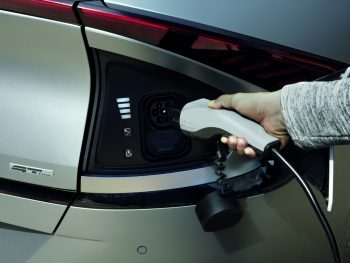EV chargers to turn off at peak times to protect National Grid
New electric car charging points in homes and workplaces are to automatically switch off in peak times to avoid potential blackouts.

New chargers in the home and workplace will be pre-set to not function from 8am to 11am and 4pm to 10pm
A report in The Times said that new regulations being lodged with the World Trade Organisation will come into force at the end of May 2022 and will see new chargers in the home and workplace be pre-set to not function from 8am to 11am and 4pm to 10pm. However, owners will be able to override this, for example if they are a shift worker.
In addition, the Government will also be able to impose a “randomised delay” of 30 minutes on areas of high demand to prevent grid spikes.
Public chargers and rapid chargers on motorways and A-roads will be exempt from the changes.
The move would avoid pressure on the grid – concerns over the impact of fast-rising EV take-up and the potential for blackouts have been mounting, particularly since the Government announced the 2030 ICE ban.
But National Grid has long maintained it’s confident the network can support the extra demand for electricity this transition will create.
Speaking at the end of 2020, Graeme Cooper, transport decarbonisation director, said: “There is definitely enough energy and the grid can cope easily. The growth in renewable energy means this is not static and smart metering will make this more efficient. For example, the growth in wind power from the extra offshore wind farms being developed will adequately meet the future demand for electrifying transport – an extra 100 terrawatt hours from our current 300 terrawatt hours consumed.”
It’s also pointed out that the most demand for electricity we’ve had in recent years in the UK was for 62GW in 2002. Since then, due to improved energy efficiency such as the installation of solar panels, the nation’s peak demand has fallen by roughly 16%.
Even if everyone all switched to EVs overnight, demand would only increase by around 10%, according to National Grid’s prediction – less than the demand in 2002.
Energy regulator Ofgem has also set out plans for how it will ready the grid for the roll-out of EVs and help drivers make the switch. While it’s continuing network investment, it’s also said that smart charging and vehicle-to-grid technology will reduce the need for extra power plants.
Cleantech company Moixa said concerns surrounding the grid are nothing new and the proposed charger switch-off plans are a good way of answering this.
Tanya Sinclair, policy director for UK & Ireland at ChargePoint, commented: “The challenge for the Government, and perhaps the wider electricity system, is ensuring the ‘smartness’ in every charger is actively used by consumers, and managing the load represented by the legacy charging infrastructure already in the field which is not smart. Companies like ChargePoint are ensuring it’s easy, flexible and intuitive for drivers to manage their own home charging via the ChargePoint app, and fleet operators can manage the charging activities of their vehicles.”
But she added that while such measures can go some way to lessening the impact of vehicle electrification on the grid, there will still need to be investment from industry and government to ensure that there are enough places with enough capacity to support rapid and high-power DC charging hubs needed for long journeys.
“This should not be seen as a threat to the grid and the energy industry, but more as an opportunity. The past 10 years have seen a huge push for efficiency in power consumption across the board. A building today uses only a small proportion of what it did in the past, and this gap is only going to get wider and the electrification of transport offers a new growth avenue for the industry, however, for it to be a success, action and investment needs to take place now,” added Sinclair.













Adam16. Sep, 2021
Smart chargers do NOT just TURN OFF at peak times. The smart chargers have a “ready by” time that you can set that ensures your vehicle will be charged by the time set, and the charger intelligently communicates with DNO infrastructure, and based on current and projected demand schedules as much of the charging as possible away from peak times, by either telling the vehicle to draw LESS power OR none, BUT, if you car wouldn’t be charged because of the reduction it gets ignored and keeps charging, ensuring the car and the grid are both served appropriately